What We´re Reading… September 2023
The September issue of Transplantation, the official Journal of ILTS and the Transplantation Society is out now.
Free access for ILTS members!
Article selections by Ryan Chadha, Nicholas Syn, Alessandra Mazzola, Beth Wilson, Jiang Liu, Carmen Vinaixa and Abdul Hakeem.
| HEPATOLOGY The Lancet Gastroenterology and Hepatology Global disparities in mortality and liver transplantation in hospitalised patients with cirrhosis: a prospective cohort study for the CLEARED Consortium Background: Cirrhosis, the end result of liver injury, has high mortality globally. The effect of country-level income on mortality from cirrhosis is unclear. We aimed to assess predictors of death in inpatients with cirrhosis using a global consortium focusing on cirrhosis-related and access-related variables. More Transplant International European Society for Organ Transplantation Consensus Statement on Biomarkers in Liver Transplantation Currently, one-year survival following liver transplantation (LT) exceeds 90% in large international registries, and LT is considered definitive treatment for patients with end-stage liver disease and liver cancer. Recurrence of disease, including hepatocellular carcinoma (HCC), significantly hampers post-LT outcomes. An optimal approach to immunosuppression (IS), including safe weaning, may benefit patients by mitigating the effect on recurrent diseases, as well as reducing adverse events associated with over-/under-IS, including chronic kidney disease (CKD). Prediction of these outcome measures-disease recurrence, CKD, and immune status-has long been based on relatively inaccurate clinical models. To address the utility of new biomarkers in predicting these outcomes in the post-LT setting, the European Society of Organ Transplantation (ESOT) and International Liver Transplant Society (ILTS) convened a working group of experts to review literature pertaining to primary disease recurrence, development of CKD, and safe weaning of IS. More Liver Transplantation Saroglitazar improves nonalcoholic fatty liver disease and metabolic health in liver transplant recipients NAFLD is common after liver transplantation (LT) and is associated with an increased metabolic burden. Currently, there is a paucity of investigations into the treatment of post-LT NAFLD. In the present study, we evaluated the safety and efficacy of saroglitazar, a novel dual peroxisome proliferator-associated receptor α/γ agonist, on the treatment of post-LT NAFLD and metabolic burden. More |
| SURGERY Transplantation Technical Variant Liver Transplant Utilization for Pediatric Recipients: Equal Graft Survival to Whole Liver Transplants and Promotion of Timely Transplantation Only When Performed at High-volume Centers Background: Technical variant liver transplantation (TVLT) is a strategy to mitigate persistent pediatric waitlist mortality in the United States, although its implementation remains stagnant. This study investigated the relationship between TVLT utilization, transplant center volume, and graft survival. More Artificial Organs The impact of center volume on the utilization and outcomes of machine perfusion technology in liver transplantation: An international survey Introduction Machine perfusion (MP) was developed to expand the donor pool and improve liver transplantation (LT) outcomes. Despite optimal results in clinical trials, the real-world MP benefit in centers with low-/mid-volume activity (LVCs) is still being determined. More Surgery Liver transplantation with interposition saphenous vein conduits for arterial reconstruction: Impact of morbidity and arterial ischemia time Background: The outcomes of liver transplantation with hepatic arterial reconstruction using interposition saphenous vein conduits are not widely reported. Here, we share our experience using great saphenous vein conduits for hepatic arterial reconstruction in living donor liver transplantation. More |
| ANESTHESIA AND CRITICAL CARE Clinics in Research in Hepatology and Gastroenterology Efficiency and safety of total plasma exchange in critically ill cirrhotic patients with acute on chronic liver failure: a pilot study Background and aims: Treatment of patients with acute on chronic liver failure (ACLF) admitted to the ICU is very limited. The aim of this pilot study was to evaluate the efficiency on liver function and safety of therapeutic plasma exchange (TPE) in critically ill cirrhotic patients admitted with ACLF in a liver ICU. More Transplantation N-acetylcysteine in the Donor, Recipient, or Both Donor and Recipient in Liver Transplantation: A Systematic Review With Meta-analysis and Trial Sequential Analysis Background: N-acetylcysteine (NAC) is a potentially effective drug for treating ischemia-reperfusion injury in transplanted livers, but its effect remains controversial. More JAMA Surgery Simultaneous vs Staged Cardiac Intervention in High-Acuity Liver Transplant Coronary artery and cardiac valvular disease are increasingly prevalent among liver transplant (LT) candidates due to an aging population and high rates of nonalcoholic steatohepatitis.1 Historically, such cardiac pathology was a contraindication to LT, but cardiac intervention can be performed either before or simultaneously with LT. More |





